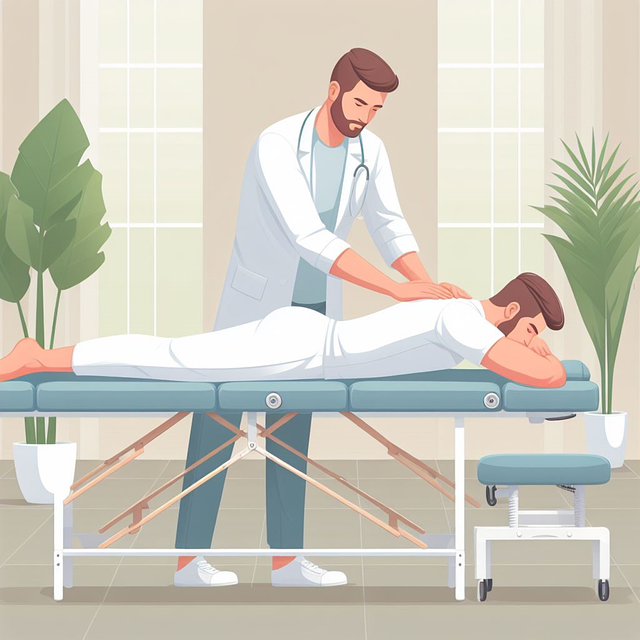Platelet-rich plasma (PRP) injections offer a safe, natural stem cell therapy for pain management. Derived from a patient's blood, PRP contains growth factors that stimulate tissue repair and reduce inflammation in tendons, ligaments, and joints. With minimal side effects and personalized treatment, PRP is transforming non-invasive treatments for chronic pain conditions. Clinical advancements aim to enhance its effectiveness across various medical applications.
“Unleash your body’s natural healing power with Platelet-Rich Plasma (PRP) injections—a groundbreaking approach to pain management. This innovative treatment harnesses the potential of your own blood to accelerate tissue repair and reduce pain.
Our comprehensive guide explores the science behind PRP, its effectiveness in facilitating healing, and its growing popularity as an alternative to conventional stem cell therapy for pain relief. We’ll also delve into safety considerations, potential side effects, and what the future holds for this promising treatment.”
Understanding Platelet-Rich Plasma (PRP) Injections
Platelet-rich plasma (PRP) injections have emerged as a revolutionary stem cell therapy for pain management, offering a natural and minimally invasive approach to healing. PRP is derived from a patient’s own blood, where platelets are concentrated to create a powerful bioactive agent. These platelets contain growth factors that play a crucial role in tissue repair and regeneration. When injected into damaged areas, such as tendons, ligaments, or joints, PRP accelerates the body’s natural healing process.
The procedure involves drawing a small amount of blood from the patient, separating the plasma from other components, and then re-injecting it back into the affected region. This focused delivery of growth factors stimulates cellular activity, encouraging the formation of new, healthy tissue while reducing pain and inflammation. As a safe and personalized treatment option, PRP therapy has gained popularity for its potential to revolutionize stem cell therapy for pain, providing an alternative to more invasive surgical interventions.
How PRP Facilitates Healing and Pain Reduction
Platelet-rich plasma (PRP) injections have emerged as a promising treatment option, combining elements of regenerative medicine and stem cell therapy for pain relief. PRP works by harnessing the body’s natural healing mechanisms. It involves extracting blood from the patient, separating out the platelets, which are rich in growth factors, and injecting this concentrated plasma back into the affected area. These growth factors play a pivotal role in facilitating healing by stimulating the production of new, healthy cells and promoting tissue regeneration.
The injection process targets areas experiencing pain or requiring repair, such as damaged tendons, ligaments, or joints. The growth factors in PRP accelerate the body’s natural repair process, reducing inflammation and encouraging the formation of new, stronger tissue. This results in significant improvements in pain reduction, enhanced mobility, and accelerated recovery, making PRP a game-changer in non-invasive treatments for various chronic conditions often associated with persistent pain.
Benefits of Using Stem Cell Therapy for Pain
Stem cell therapy for pain offers a promising approach in the medical field, providing a natural and potentially long-lasting solution to manage chronic conditions. One of its key advantages is the ability to harness the body’s own healing mechanism. By injecting platelet-rich plasma (PRP), which contains a high concentration of stem cells, into affected areas, the body’s regenerative process is stimulated. This therapy has shown effectiveness in treating various types of pain, including joint and muscle aches, as it promotes tissue repair and reduces inflammation.
Unlike traditional medications that only mask symptoms, stem cell therapy for pain addresses the root cause by encouraging the growth of new, healthy cells. It is a relatively non-invasive procedure with minimal side effects, making it an attractive option for those seeking alternative treatments. The use of a patient’s own cells ensures compatibility and reduces the risk of rejection, making this therapy a safe and personalized approach to pain management.
Safety, Side Effects, and Future Outlook of PRP
PRP injections have established themselves as a promising avenue in stem cell therapy for pain management due to their safety profile and minimal side effects. The procedure involves extracting a patient’s own blood, separating out platelet-rich plasma, and injecting it into affected areas. This autologous approach significantly reduces the risk of immune system rejection or adverse reactions commonly associated with foreign substances. While generally well-tolerated, mild side effects such as pain, swelling, or bruising at the injection site may occur. These temporary discomforts usually subside within a few days.
Looking ahead, ongoing research and technological advancements in PRP are expected to further enhance its effectiveness in various medical applications. Improvements in processing techniques enable more precise tailoring of PRP to specific patient needs. Additionally, expanding clinical trials will provide valuable insights into the long-term efficacy and safety of PRP, solidifying its role as a viable alternative or adjunct to conventional pain management strategies, particularly in stem cell therapy for pain relief.
Platelet-rich plasma (PRP) injections emerge as a promising alternative in managing pain and promoting healing. By harnessing the body’s natural regenerative capabilities, PRP offers a minimally invasive approach to treating various conditions, with stem cell therapy for pain being one of its key benefits. The safety profile and potential long-term effects of PRP make it an exciting development in the field of medicine, paving the way for further research and exploration.
